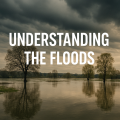Beyond the Current: A New Understanding of Rivers
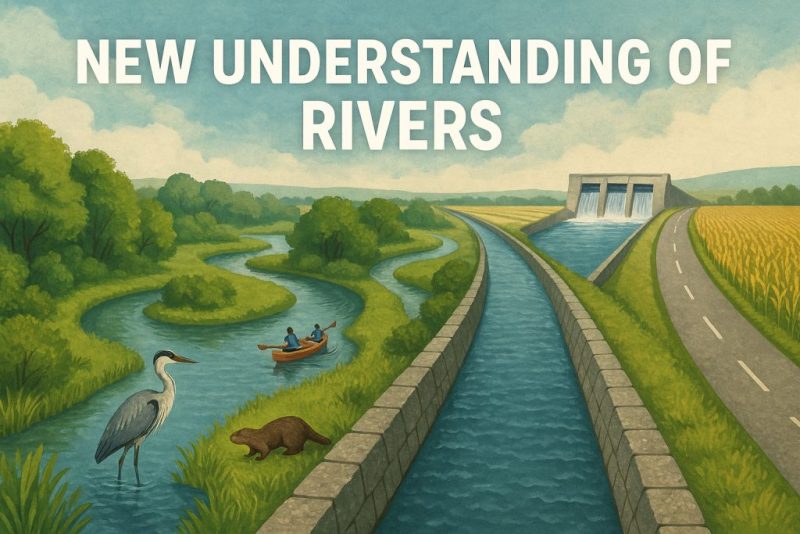
A new understanding of rivers reveals them as complex, fragile ecosystems—not just resources—leading to global shifts in science, policy, and protection.
Since early civilizations, the renewable energy of rivers has been harnessed for watermills and trade, but intense exploitation didn’t begin until the 20th century. Watercourses have been altered using dams within hydroelectric power plants that produce energy for households and factories. River navigation stimulates industrial development. For all these reasons rivers have been changed, adapted to man. Besides, there is a technology ready to carry out extensive regulations such as flood and erosion defense systems, and defense systems against other harmful effects of water. As a result, the majority of European and American lowland rivers have become sterile watercourses with fixed and concrete banks.
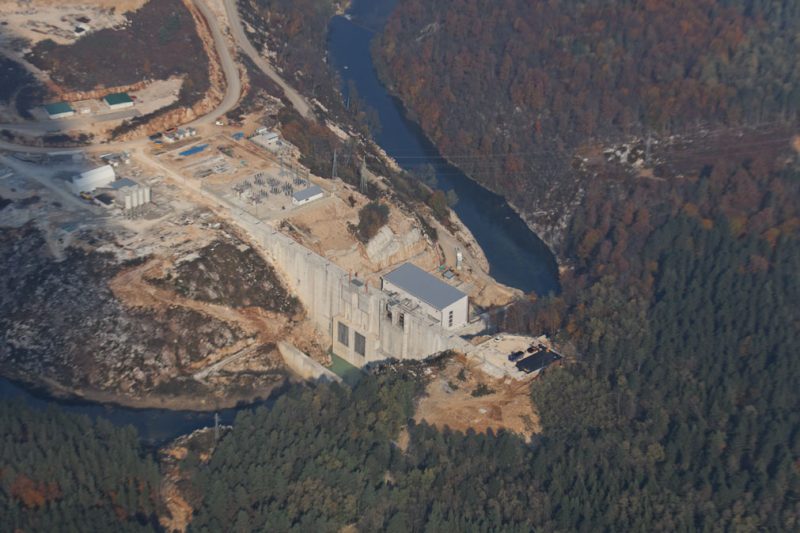
Over time, science has revealed that many interventions—such as flood and erosion control, hydropower exploitation, and navigation regulation—have disrupted the natural functioning of rivers and caused lasting harm.
Taming the Flow: How Industrial Progress Altered the Soul of Rivers
For centuries, rivers fueled human advancement—turning the wheels of watermills, enabling trade, and eventually generating renewable energy. But it wasn’t until the 20th century that their exploitation reached an industrial scale. With the rise of hydroelectric dams, natural watercourses were reshaped to serve our growing energy demands, powering homes and factories. River navigation became essential to industrial development, and with advancing technologies, we gained unprecedented control—constructing vast systems of flood defenses, erosion barriers, and engineered channels.
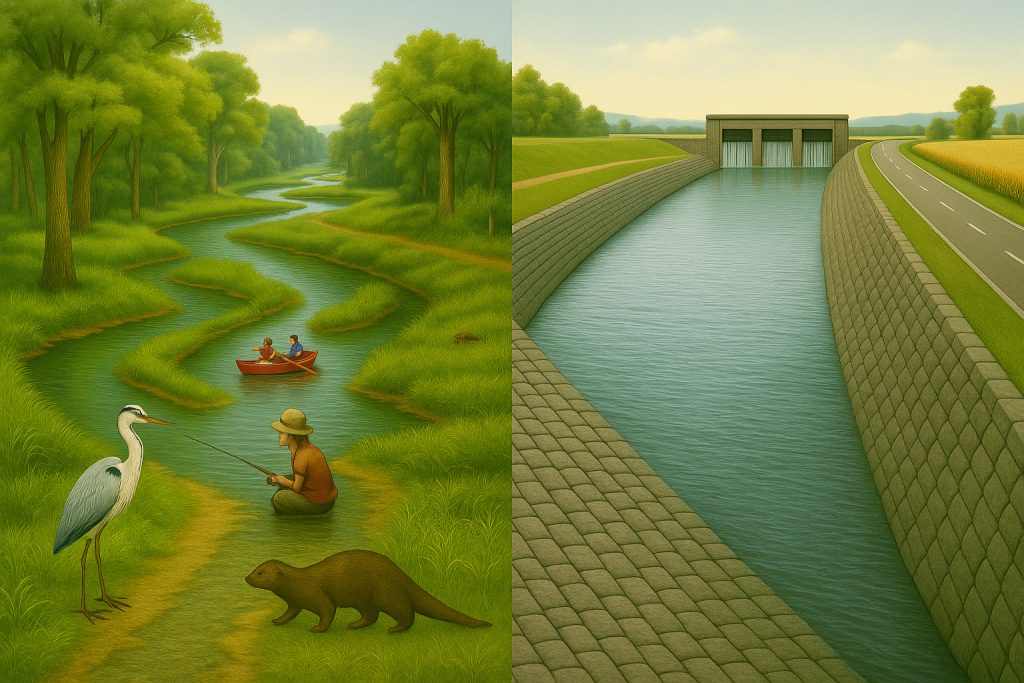
In the relentless pursuit of progress, rivers were tamed, straightened, and often entombed in concrete. Across much of Europe and North America, once-wild lowland rivers became sterile waterways, stripped of their natural rhythms, biodiversity, and ecological richness—sacrificed to serve a single purpose.
Read about the negative impacts of the dams
More Than Water: A New Understanding of What a River Truly Is
The old view—that nature exists solely as a resource for human use—is becoming a relic of the past. Today, we recognize that rivers serve many vital functions, often in ways that aren’t immediately visible (benefits of rivers). A river is no longer defined by a long, straight, or gently curving channel. It is something far more intricate and dynamic.
A river is not just water flowing between two banks—it is rain rising into the sky, moisture soaking into underground reservoirs, and currents branching into side arms, oxbow lakes, and floodplain forests. This expanded understanding has led to a profound reevaluation: rivers are not only hotspots of biodiversity but also critical assets for human well-being and resilience.
A natural river system—with its meanders, wetlands, and vegetated banks—offers the most effective flood protection, far outperforming many engineered defenses. Aquatic plants and riparian vegetation act as natural filters, removing organic and mineral pollutants from agricultural runoff, industrial waste, and urban discharge.
Perhaps most remarkable, however, is what we can’t easily see: the invisible equilibrium maintained by intact river ecosystems. When this balance is broken—say, by straightening channels, draining wetlands, or disrupting groundwater flow—the consequences can ripple through the entire hydrological system. Lowered underground water level, increased flood risks, and degraded water quality are just a few of the unexpected outcomes.
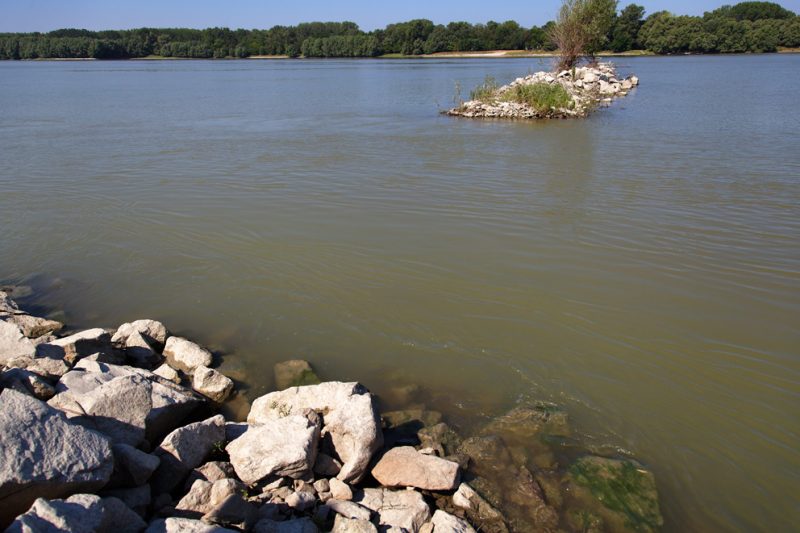
Science Meets Policy: A Global Shift in River Protection
The European Union has embraced the latest scientific understanding of rivers, embedding it into its environmental legislation. Core strategies for sustainable water management are outlined in key directives, including the Water Framework Directive, the Floods Directive, the Birds Directive, and the Habitats Directive.
These policies aim not only to preserve rivers but also to manage them in ways that respect their natural dynamics. Under the Water Framework Directive, rivers are to be given the space they need to function as living systems—meandering, flooding, and evolving over time. As a result, many European countries are now actively revitalizing their rivers, restoring floodplains, removing artificial barriers, and allowing nature to reclaim its role in shaping the landscape.
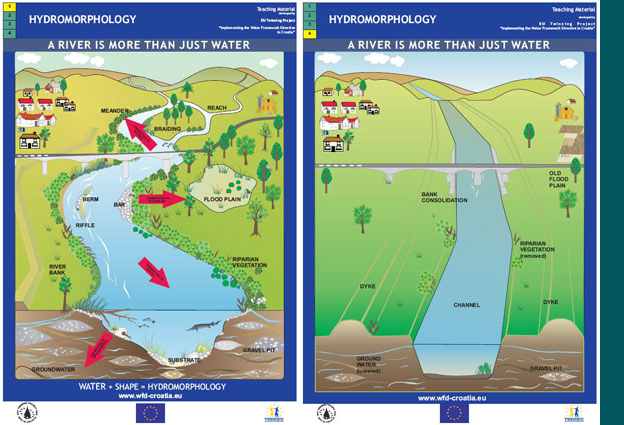
This paradigm shift in water management is not limited to Europe. In the United States, initiatives like dam removals on the Elwha and Klamath Rivers have become powerful symbols of ecological restoration. Agencies are recognizing that free-flowing rivers support healthier ecosystems, reduce long-term infrastructure costs, and build climate resilience.
In the United Kingdom, similar efforts are underway. Projects are reintroducing natural meanders, reconnecting floodplains, and removing obsolete weirs, all guided by a growing understanding that working with water, not against it, brings the greatest benefit.
Across continents, a new water ethic is emerging—one that values rivers as living systems rather than channels to be engineered and controlled.
